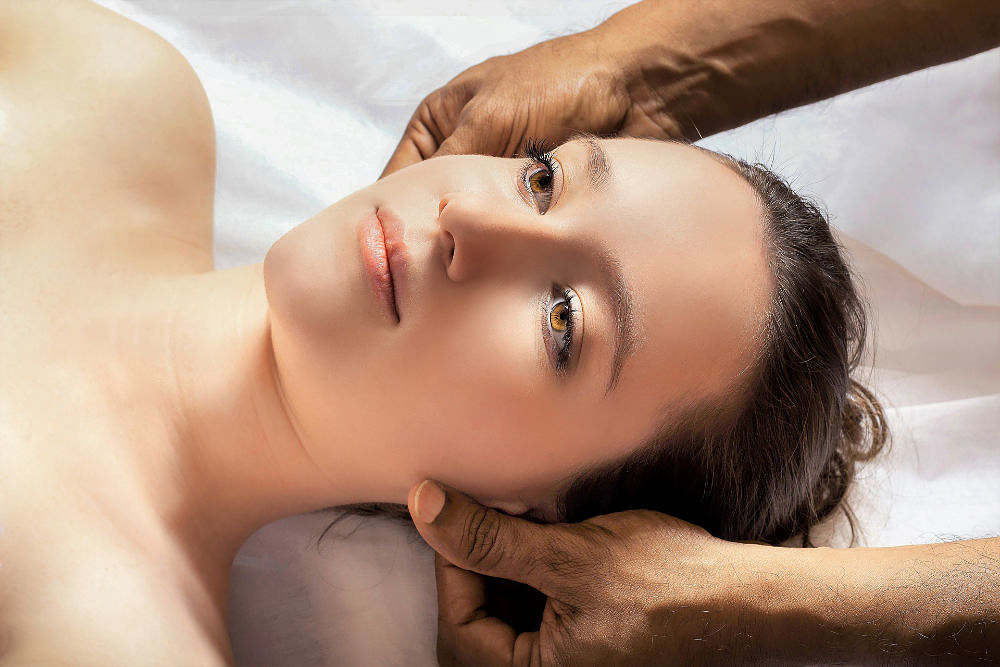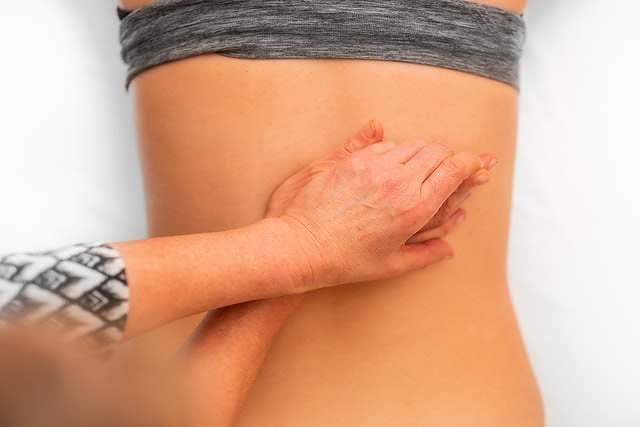Many people find that living with pain is a huge cost to their health. If you live with pain, have trouble sleeping at night, would like to heal faster and have more energy throughout the day. Or simply to improve your range of motion and flexibility, then trained osteopaths can help you and improve your overall health.
This article explores the secrets to the success of osteopathy.
Osteopathy is a branch of medicine that focuses on the musculoskeletal system, and the four main goals of osteopathic treatment are to promote health and well-being, diagnose and treat dysfunction and pain, restore function, and prevent disease.
The treatments used by osteopathic physicians to achieve these goals are based on a very holistic approach to healing. This differs from the treatment physicians perform in which they diagnose, treat, and prevent disease often in a particular area of the body only. Osteopathic medicine also recognizes the strong connection between mind and body, and therefore tends to be more holistic in its approach to healing.
Osteopaths aim to relieve pain and correct alignment of the bones in the body. Osteopaths also believe that the body has an innate ability to heal itself. As such, they mainly use hands-on manipulation techniques such as massage, mobilization, and gentle stretching to help get the body into its natural alignment and so the natural healing process can occur.
The body is made up of many different systems that work together to form the human anatomy. The musculoskeletal system is made up of bones, cartilage, ligaments, and tendons. Muscles are used to move these parts of the body.
Osteopathy is a hands-on approach to health care that is concerned with the relationship between musculoskeletal structure and function. Osteopathic physicians manipulate and move joints, muscles, tendons, ligaments, nerves, soft tissues, and other bodily structures to diagnose, treat, and prevent disease.
Cranial osteopathy is is an advanced osteopathic technique that focuses on the movement and structure of the head, neck and cranial bones. It is an advanced osteopathic technique that focuses on the movement and structure of the head, neck and cranial bones. This is done by correcting imbalances that exist between the central nervous system (CNS) and the musculoskeletal system. The treatment is adapted to each patient's individual needs, and it is safe for all ages and medical conditions.

Frozen shoulder is a common condition where you have pain and stiffness in your shoulder and cannot raise your arm above your head. It is associated with pain and decreased range of motion that is often misdiagnosed as a rotator cuff injury, bursitis, or impingement. It usually develops gradually, over weeks or months, and is more common in women than men. A frozen shoulder is known as adhesive capsulitis and is a common cause of shoulder pain, especially in people between the ages of 35 and 60. The condition can last for months or even years.
Plantar fasciitis is a common foot pain condition that causes heel pain after getting up from a seated position. It can also be the cause of pain in the bottom of the foot, or even in the arch of the foot. It is an inflammation of the plantar fascia, the name plantar fasciitis comes from the thick ligament in the bottom of your foot called the plantar fascia. The plantar fascia connects your heel bone to your toes and supports the arch of your foot. This condition can be caused by many different factors like being overweight, flat feet, high arches, tight calf muscles, and overuse.
Osteopathy for Tennis elbow, Golfers elbow, Carpel tunnel, and Repetitive strain injury (RSI). generally causing pain in the arm or elbow that gets worse with activity. Osteopathic treatment involves placing fingers in the right places and gently manipulating the elbow to bring about a reduction in pain and improve your range of movement.
If you are recovering from surgery, suffer from fibromyalgia, ME, long Covid or chronic fatigue syndrome, then lymphatic drainage can help with swelling and oedema.
Lymphatic drainage is a method of massaging the body to promote the drainage of lymph, the fluid in which the body's white blood cells are suspended. The lymphatic system is part of the circulatory system, and it helps the body fight infections by transporting white blood cells to the infection site.
Sports injuries can affect anyone. Whether you're an amateur or professional sports person, competing at a recreational or competitive level, or taking part in an individual or team sport, there's a chance you could pick up an injury. While some injuries can be mild and you can still take part in your sport, others can be more serious and may need expert rehabilitation to make sure you can get back to playing.
If you have a history of sport injuries, chronic or recurrent injury, expert rehabilitation can help with the PIP Joints in the hands, Shoulder, Knee, Patella, Ankle, Pelvis for example.
If you have been diagnosed with a “slipped disc” or have disc pain. It may feel like the pain is in the lower back and/or you can feel a tingling down the inside of your leg possibly all the way to your foot. It may also it hurt when you stand.
You could be suffering from a condition known as “intradiscal pressure”. The discs of the spine act as shock absorbers and are often injured without the person being aware of it. The spinal ligaments are also prone to injury. The pain can come in a variety of ways from a dull ache to a sharp pain. Neck pain due to whiplash injuries may also be treated.
You may have Sciatica is where the sciatic nerve, may become is distressed or compressed. The nerve runs from your lower back to your feet.

Migraines and headaches are really common and can cause a lot of pain and discomfort. It can be really frustrating when these occur, especially when you can't work and can't relax. It can be due to poor posture, stress, muscle strain, or a poor sleeping position. Osteopathic manipulation is a safe, effective, and non-invasive treatment for headaches and migraines. Osteopathic manipulative treatment can be used to treat many types of headaches, including migraines, tension headaches, and cluster headaches.
Osteopaths provide gentle, hands-on treatments which help to restore the body's normal functions. By treating the whole body and not just the symptoms, we aim to restore health. We use a wide range of techniques, such as gentle pressure on parts of the body, passive or active movements and stretching, and manipulation.

As osteopaths, we also use the Manual Inhibition technique – a gentle and direct counter pressure applied on an area that is pain-free in order to inhibit or block painful muscle spasm.
Patients with acute and chronic injuries to the musculoskeletal system may be diagnosed and prescribed treatment using biomechanics.
Biomechanics is the science of movement of a living body, it focuses on how muscles, bones, tendons, and ligaments work together to produce movement. The musculoskeletal system is as interconnected as the various organs in the human body, so treating one injury without addressing the other is akin to taking apart a complex machine without planning to put it back together. For example, an ankle injury may cause a person to limp and favour the other foot. This imbalance may, over time lead to other injuries, such as a knee or hip injury, or lower back pain.
Osteopathy is a practice that is very broad in scope and has been around for over a hundred years, but what makes it so successful?
The manual osteopathic techniques are a skill acquired from extensive training, demonstration, and practice that takes years to master. In addition to manual osteopathic techniques, osteopathic practitioners may be trained to employ other procedures such as exercise therapy and massage.
The Osteopathic Patient-focused approach can be very beneficial. The osteopath can customize treatment to patient's needs, with less invasive treatments and often immediate relief.
The number of sessions that are needed will depend on the problem or symptoms that are being treated. A number of sessions may be required initially to address a specific complaint and then another series of treatments may be required periodically to treat an ongoing issue such as a digestive problem.
More serious medical conditions can also be treated in this way and the healing may require ongoing treatment. Your Osteopath will help you decide and provide treatment that is appropriate.
Osteopathy is a safe, effective, and natural way to treat musculoskeletal problems and restore physiological function. Osteopathic treatment focuses on the interrelationship between structure and function. Osteopaths believe that the body has the ability to heal itself, and that they can help it do so by relieving harmful tension in the muscles and tissues through a patient centric holistic approach.
We hope you have found this article to be helpful. If you have any more questions about Osteopathy or if you would like to learn more about what we do here at The Art of Healing. Please contact us anytime. We would love to hear from you. We would be more than happy to answer any questions you may have.